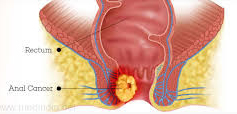By melbourne@colorectal/November 8, 2024
Anal Cancer
The anal canal is 2-4 cm long and surrounded by a group of muscles called the anal sphincter complex, this acts to maintain continence. The lining of the anal canal changes from squamous epithelium to columnar epithelium as it goes upwards into the rectum. Cancers can occur involving the lining cells and as such can be squamous cell cancers, transitional cell cancers or columnar cell cancers (adenocarcinomas).
Most anal canal cancers are squamous cell cancers.
Risk Factors
- Age>50
- Smoking
- Long-standing inflammation including fistulas(tracks/tunnels) and sepsis/scarring
- Anal warts associated with Human Papilloma Virus
- Anal sex with multiple partners
Symptoms and Signs
- Anal lump
- Anal pain
- Bleeding
- Anal pressure
- Bowel habit change
Diagnosis
- Examination including peri-anal inspection and digital rectal (glove) examination.
- Biopsy of the area to establish tissue type.
- Anal ultrasound to establish involvement of sphincter muscles.
- MRI for large complex lesions
- CT scanning to include abdomen, pelvis and inguinal regions are performed to estimate the stage of the disease.
Staging
- Anal cancer is staged by the TNM system
- T1 <2cm, T2<4cm, T3 sphincter involvement, T4 through sphincter
- N0 no lymph nodes, N1 0-3 lymph nodes positive for tumour cells, N2 >3 lymph nodes positive for tumour cells.
- M0 no distant metastases, M1 distant metastases
